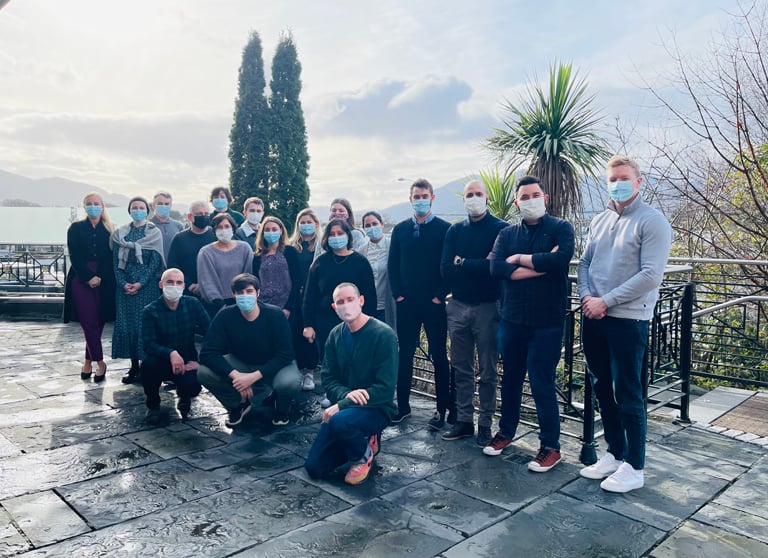Tecan uses cookies to improve our website. By continuing to browse our website, you accept our cookie policy.
Tecan uses cookies to improve our website. By continuing to browse our website, you accept our cookie policy.

The biomanufacturing industry is constantly on the lookout for new technologies to improve the speed, accuracy and performance of its processes, particularly in the biologics arena. Biotechnology company ValitaCell has embraced this challenge, developing novel assays and label-free bright field imaging approaches employing artificial intelligence to complement fluorescence-based cell monitoring techniques.
Scientists working in the biopharmaceutical industry are constantly seeking novel drugs to advance human healthcare. However, despite the introduction of a steady stream of innovative technologies, the time and costs associated with the manufacture of biologics and cell therapies is still very high. ValitaCell, headquartered in Dublin, Ireland, is tackling this issue by developing pioneering analytical technologies and quality control tools to improve the performance, speed and accuracy of biomanufacturing, helping to bring novel therapies to market more rapidly and cost effectively.
 The ValitaCell team is revolutionizing QC for biomanufacturing
The ValitaCell team is revolutionizing QC for biomanufacturing
The company’s flagship product, Valita®Titer, is a high throughput tool for quantification of IgG in monoclonal antibody development and manufacturing. Dr Eligio Iannetti, Business Development Manager at ValitaCell, explained: “IgG quantification has applications all the way through the biomanufacturing process, including in antibody discovery, cell line and process development, and manufacturing. Following the discovery of an antibody candidate, many clones must be screened to identify the best-producing cell line for downstream development. It is critical to know how much of a potential therapeutic the cell lines are producing over time, as well as the stability of the clone, which requires high throughput quantification of IgG. While this can be done by HPLC, analysis is slow and usually involves an overnight run. ELISA is another option, but it has multiple complex washing and blocking steps and can take up to five hours to complete.”
“In contrast, ValitaTiter is a straightforward add-mix-read assay completed in three steps,” Eligio continued. “This fluorescence polarization (FP) assay is supplied in a microplate format, with the bottom of each well coated with a fluorescentlylabeled IgG-binding peptide. When this peptide binds to the IgG of interest, quantification can be quickly and easily performed by measuring FP in a microplate reader. An entire 96- or 384-well plate can be read in just 10 minutes. It’s fast, easy to use, convenient and cost effective – all you need is a plate reader with FP capabilities. Tecan’s Infinite® and Spark® readers are excellent examples of compatible systems, and the company also supplies liquid handling platforms for those labs wanting to automate the process.”
Artificial intelligence is increasingly being employed across the scientific community, and ValitaCell has developed an image analysis software – CellAi® – to extract information from label-free microscopy images, such as those obtained using bright field techniques. This game-changing technology, based on both deep and machine learning, has a wide range of image analysis applications. “Typically, a lab carrying out this type of work will have a plate reader and a microscope. The automated microscopes used for high content screening are excellent for microscopy but can cost as much as one million euros, and don’t have an integrated plate reader. The Spark Cyto is ideal for this application, as it combines bright field and fluorescence imaging with conventional detection technologies for real-time cytometry.”
There is a strong commercial synergy between ValitaCell and Tecan, and a good technological fit; we supply innovative analytical technologies, and Tecan provides high quality hardware.
“One of the first CellAi applications was developed using Chinese hamster ovary (CHO) cells and the Spark Cyto’s bright field imaging capability with a 10x objective. The benefit of this label-free technology is that we can predict cell viability without the need for staining, which can overestimate viability and has relatively low throughput. Moreover, trypan blue – the gold standard method to measure cell viability – has been identified as toxic. In addition, this technique generally uses cassettes containing the cells and the stain, which limits the number of samples that can be measured at any one time, while producing substantial waste in the process. Our approach is a safe, non-destructive, accurate and costeffective way of measuring cell viability from an entire 96- or 384-well plate without staining, and produces zero waste. You simply put the plate in the Spark Cyto and use bright field imaging to predict cell viability using the CellAi software. The 10x magnification produces excellent image quality and, since the reader also includes FP capabilities, it has everything needed for CellAi and ValitaTiter assays in a single small footprint, relatively cost-effective device that can quickly acquire data from an entire plate.”
ValitaCell has made extensive use of Tecan instruments during the development of its products, and this has led to a strong collaboration with Tecan’s global distributor network, partnering to combine and integrate both companies’ technologies into customers’ labs. “There is a strong commercial synergy between ValitaCell and Tecan, and a good technological fit; we supply innovative analytical technologies, and Tecan provides high quality hardware. Some customers already have suitable instrumentation in their labs and just require our reagents, software or service, so we help them set up and optimize the assay on their existing equipment. Others want to use our technology but don’t have a suitable plate reader or an automated microscope. We can talk to these customers and their distributors and suggest an appropriate system for their specific application, such as the Infinite reader for labs that only perform IgG quantification or the Spark Cyto for those that also require whole-well imaging for cell line development. The collaboration with Tecan is a clear win-win situation,” Eligio concluded.
For Research Use Only. Not for use in clinical diagnostics.
To learn more about ValitaCell, visit valitacell.com
To find out more about Tecan’s cell biology solutions, go to lifesciences.tecan.com/cellbiology